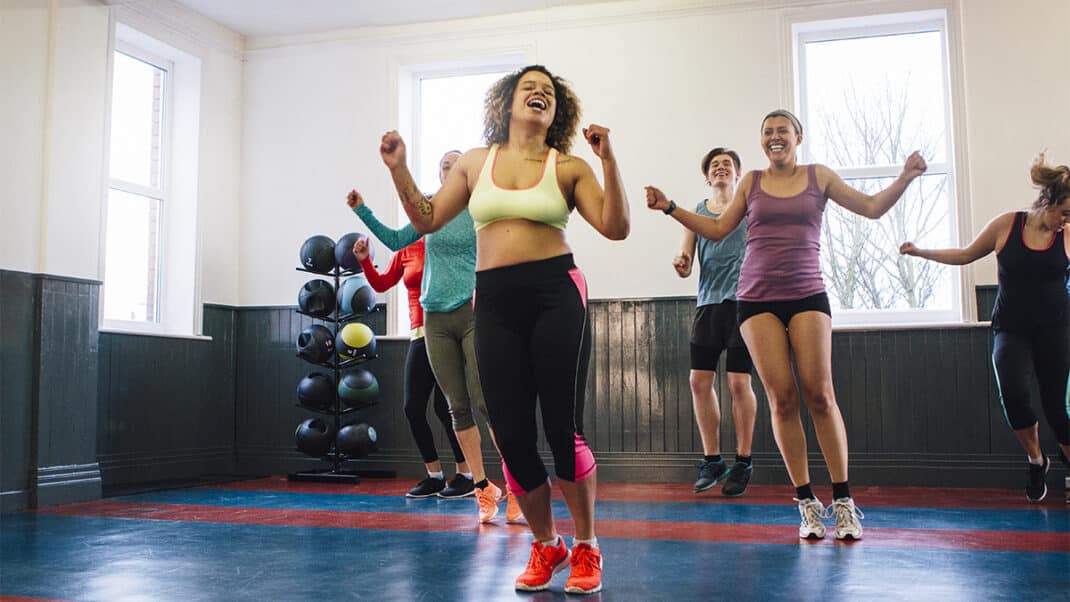Teaching Tips: Interval Training Classes
Interval training can be a very effective way for clients to increase sports performance, lose weight faster and make workouts more enjoyable.
The benefits of interval training include the following:
- more calories burned in a shorter amount of time
- increased compliance through variety (less boredom)
- improved neuromuscular coordination
- better-trained slow- and fast-twitch muscles
- increased tolerance for lactic-acid buildup
- increased aerobic and anaerobic threshold (aerobic capacity)
- improved ability of the body to use fat as fuel
Some fitness professionals falsely believe that interval training requires special equipment. In fact, this type of training is great because you can do it by simply modifying any workout. Basically, interval training consists of bursts of high-intensity training alternating with periods of lighter activity to recover. This type of training can be applied to any class format.
Here is one example: Cycle at a comfortable pace for 4 minutes, then–while maintaining constant speed–increase intensity for 30 seconds to 1 minute by adding resistance. Repeat this cycle for 30 minutes.
To integrate interval training into your classes in a safe and effective manner, consider the following tips and precautions.
1. Know that interval training integrates well into any cardio-based class; for example, step, high-low, indoor cycling or cardio ball.
2. Be experienced enough to accurately assess the fitness level of class participants.
3. Develop an accurate system to gauge intensity. Perceived exertion seems to work best in a choreography-based class. Heart rate monitors are good for indoor cycling.
4. Always warm up students for 5-10 minutes before starting an interval workout.
5. After warm-up, begin with exercises or choreographed moves that allow participants to work in their comfort zones. Step choreography is great for maintaining steady state.
6. When incorporating intervals, encourage participants to increase intensity. Movements with increased speed or range of motion are helpful, as are plyometrics or power moves. For example:
- jump squats
- explosive lunges
- jumping jacks
- vertical jumps
- squat thrusts
- mountain climbers
- fast feet
7. Always give modifications. Many participants may not want or feel fit enough to do interval training. We want them to feel included. So, as an example, encourage them to perform a conventional squat as a substitute for jump squats during the interval. Always include movements that are less challenging. Encourage participants to monitor themselves and work at their own pace.
8. Base the length of an interval on how long the participants need to recover. A 1:3 ratio is typically sufficient. For example, if the interval of explosive lunges is 1 minute, then you will need 3 minutes or more of simple stability ball choreography to actively recover. Participants should lower their heart rates to 50%-60% of maximum (cardio comfort zone), or steady state, before repeating an interval. If students need more time to recover, then lower the intensity of the intervals.
9. Watch for signs of fatigue. Perfect form and technique are important. Encourage participants to modify movements when form begins to fail.
10. Interval training can be safely performed 1-2 times a week. Tell students to allow 2 days to recover between interval days. Encourage them to exercise at a lower intensity on those 2 days.
To learn more about interval training on the stability ball, take Appel's session on this topic at the IDEA Fitness Fusion Conference™, which is being held in Rosemont, Illinois, April 3-6, 2008. For convention information online, see the IDEA Fitness Fusion Conference. For more information, call (800) 999-4332, ext. 7, or, outside the U.S., (858) 535-8979, ext. 7.
Abbie Appel
Abbie Appel is an international fitness expert and educator who has written the SCW Ballet Barre Certification and the SCW Pilates Matwork Certification. She is a Rykä® FIT-PRO Ambassador and a senior master trainer and consultant for Schwinn® and TRX®. As a program design and instructor development specialist, Abbie creates and delivers programming for organizations such as Equinox, Crunch, and YMCA, among others. Abbie has contributed material to numerous fitness videos and publications such as Prevention and Shape magazines.







